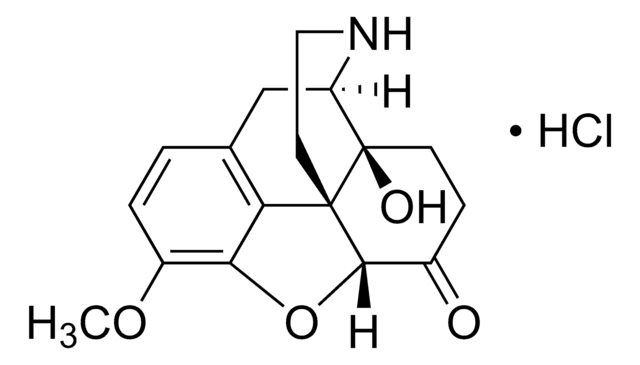N5502
Nonanoic acid
≥97%
Sinonimo/i:
Acid C9, Pelargonic acid
About This Item
Prodotti consigliati
Densità del vapore
5.5 (vs air)
Livello qualitativo
Tensione di vapore
<0.1 mmHg ( 20 °C)
Saggio
≥97%
Stato
liquid
Limite di esplosione
9 %
Indice di rifrazione
n20/D 1.432 (lit.)
P. ebollizione
268-269 °C (lit.)
Punto di fusione
9 °C (lit.)
Densità
0.906 g/mL at 25 °C (lit.)
Gruppo funzionale
carboxylic acid
Tipo di lipide
saturated FAs
Condizioni di spedizione
ambient
Temperatura di conservazione
2-8°C
Stringa SMILE
CCCCCCCCC(O)=O
InChI
1S/C9H18O2/c1-2-3-4-5-6-7-8-9(10)11/h2-8H2,1H3,(H,10,11)
FBUKVWPVBMHYJY-UHFFFAOYSA-N
Cerchi prodotti simili? Visita Guida al confronto tra prodotti
Categorie correlate
Applicazioni
- Qualitative and Quantitative Metabolite Comparison of Korean Traditional Alcoholic Beverages: Takju, Yakju, and Traditional-Soju.: Uses nonanoic acid to analyze and compare the metabolic profiles of traditional Korean alcoholic beverages, aiding in the preservation of cultural heritage and improving product quality (Tak et al., 2024).
- In Vitro Evaluation of Essential Oils and Saturated Fatty Acids for Repellency against the Old-World Sand Fly, Phlebotomus papatasi (Scopoli) (Diptera: Psychodidae).: This research explores nonanoic acid′s potential as a natural repellent, contributing to the development of safer and more effective control measures against vector-borne diseases (Temeyer et al., 2024).
Avvertenze
Warning
Indicazioni di pericolo
Consigli di prudenza
Classi di pericolo
Eye Irrit. 2 - Skin Irrit. 2
Codice della classe di stoccaggio
10 - Combustible liquids
Classe di pericolosità dell'acqua (WGK)
WGK 1
Punto d’infiammabilità (°F)
278.6 °F - Pensky-Martens closed cup
Punto d’infiammabilità (°C)
137 °C - Pensky-Martens closed cup
Dispositivi di protezione individuale
Faceshields, Gloves, Goggles, type ABEK (EN14387) respirator filter
Scegli una delle versioni più recenti:
Certificati d'analisi (COA)
Non trovi la versione di tuo interesse?
Se hai bisogno di una versione specifica, puoi cercare il certificato tramite il numero di lotto.
Possiedi già questo prodotto?
I documenti relativi ai prodotti acquistati recentemente sono disponibili nell’Archivio dei documenti.
I clienti hanno visto anche
Protocolli
In this study, SPME was used for the analysis of free fatty acids in Parmesan cheese using a 65 μm Carbowax/divinylbenzene (DVB) SPME fiber. Headspace extraction of the cheese sample was conducted at 65 °C for 15 minutes and analyzed by GC with FID detection. SPME is ideal for analyzing the volatiles associated with solid food samples. The phase chemistry of the Nukol GC column provides excellent peak shape of acidic compounds.
Il team dei nostri ricercatori vanta grande esperienza in tutte le aree della ricerca quali Life Science, scienza dei materiali, sintesi chimica, cromatografia, discipline analitiche, ecc..
Contatta l'Assistenza Tecnica.










